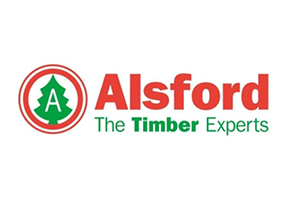- Case Studies
- East Cambusmoon Farm, Loch Lomond, West Dunbartonshire
East Cambusmoon Farm, Loch Lomond, West Dunbartonshire
Background
Steve Macken and his wife Deborah run their own wind farm development business, Lomond Energy, from their home just south of Loch Lomond. Although the projects they are involved with are UK wide, much of their activity is centred on Scotland. This encouraged them to buy East Cambusmoon Farm, a building in a poor state of repair but with the potential for redevelopment for both home and business use.
Given their business interest in renewable energy development, they had a natural and pragmatic desire to develop the property to high energy-efficiency standards, primarily to control costs and achieve a good return on their investment, but also to reduce their carbon footprint. Steve will readily admit that his expertise is not in designing dwellings, let alone achieving high standards of energy efficiency, which involves balancing many interrelated design issues. Even for architects, usually required to meet only minimum building regulations standards, this is new territory. In conjunction with his appointed architect, Thomas Robinson Architects, Steve was keen to find a complete design approach which would take account of all the relevant factors and present him with a manageable number of options.
He was very pleased, therefore, to discover the Association of Environment Conscious Builders’ (AECB) design standards (see www.carbonlite.org.uk), which provide a selection of prescribed details underpinned by the tried and tested PassivHaus approach, first developed in Austria and Germany.
His goal was to achieve a 70% improvement in energy consumption against the current Scottish building standards. Steve calculated that for the 2500 ft² development, this added only around 3-5% in cost, which would be recouped in a reasonably short time.
Having a comprehensive understanding of all the key factors affecting energy performance is extremely beneficial. Realistically, however, most practitioners will need some clear guidance on applying this knowledge effectively, confident that all major issues have been considered within the overall design approach.
Fairly early on it became apparent that renovating the original Victorian farmhouse, which was in a very poor state of repair, was not a realistic option, because of the limitations of the building and cost. It was decided to construct a new timber frame house on the same site, which gave far greater flexibility in overall design, layout and materials chosen.
The project team took a practical view on energy efficiency vs design requirements. It aimed for and achieved very good standards, which could have been specified to a higher level - but at what cost and risk overall? This Timber Solutions Case Study considers, therefore, a project from which sound, basic lessons can be learned:
-
It is always better to learn to walk before running. Despite our keen desire to export our sustainability expertise from the UK, we really do need to get some experience under our belt first!
-
The project has achieved acceptable energy goals akin to Level 3 of the Code for Sustainable Homes, a pragmatic starting point for future improvement yet not far short of the PassivHaus standard.
-
At this level you actually achieve a good return on investment, as incremental improvements beyond this standard can present significant risks to budget. This important factor cannot be ignored in our quest for much higher standards of performance.
-
The project made small changes to standard timber frame construction details to achieve significant efficiency gains without the need for specialist building skills and materials.
After nearly one year of measuring energy consumption, the results show a 15% improvement on the design values specified. So it works! For a comprehensive historical journey of their self-build project visit http://www.eastcambusmoon.blogspot.com/.
Design challenge
The key aims set by the Mackens were to:
-
Design and construct broadly to the AECB Silver standard. This is one ‘grade’ down from the PassivHaus standard and specifies:
-
70% improvement in energy efficiency over current minimum building standards
-
40kWh/m²/year energy consumption for heating and hot water use.
-
Achieve this standard at a reasonable cost, to ensure a satisfactory return on investment.
-
Design the internal room layout and aesthetics to the Mackens’ requirements. They were not prepared to compromise on these in order to achieve the energy performance. This included glazing where it was desired for light and good views of the dramatic Loch Lomond area.
-
Satisfy the Loch Lomond National Park Authority, whose permission was required regarding both the structure and choice of finishing materials.
-
Use materials and building design services that were easy to obtain locally. Generally, this was greatly aided by keeping things simple and realistic wherever possible.
The performance values designed to compared with those recommended as minimums by the Silver Standard are tabled below.
| Element | Silver Standard min U-Value | Design U Value |
| Walls | 0.25 | 0.19 |
| Ground Floor |
0.2 |
0.12 |
| Roof | 0.15 | 0.13 |
| Windows | 1.4 | 1.4 |
The Silver Standard also recommends an air tightness of 3m³/hr/m² @ 50Pa where whole building mechanical exhaust ventilation is used and 1.5m³/hr/m² @ 50Pa where mechanical ventilation with heat recovery (MHVR) is used. The Mackens chose to work to 3m³/hr/m² @ 50Pa although they did incorporate MHVR.
One other significant design consideration was the positive use of orientation and solar gain.
Options considered
| Option | Commentary |
|
Refurbish the original Victorian farmhouse vs new build on the same plot. |
The cost was considered to be prohibitive and building would have been very limited in terms of layout. The planning authority were prepared to consider an application for a new build using construction and design techniques familiar to the National Park and this was therefore chosen. |
| Timber frame vs other forms of construction. |
80% of dwelling construction in Scotland is timber frame, making it very easy to find local building design and construction skills. One of timber frame’s major benefits is its quick erection time, which with Scotland’s inclement weather has helped to make it the most popular construction form north of the border. |
|
Higher energy standards. Eg Full PassivHaus / AECB gold vs AECB silver standard. |
Factors against aiming for a higher level of energy efficiency included:
Non-availability of necessary architect and building skills, which increases the chances of major mistakes both at design and on-site. Potential restrictions on the shape of the building and location of windows. Much poorer return on investment. |
|
OSB board as the airtightness |
A continuous barrier needs to be defined and designed if levels of 3m³/hr/m² @50Pa or lower are to be achieved. Simply sealing gaps with sealant may not be sufficient in the long term. The polythene detail was very easy to explain and work to on site and is a standard detail in timber frame construction, albeit not usually sealed/taped to this extent. Sealed with tape, silicone and held down mechanically with battens, there was very little chance of failure. Proprietary high performance tapes for applying to the OSB joints are now available in the UK but were not known about or readily available at the time of construction. |
| Achieving high performance U-value in the walls using thicker timber frame studs with infill insulation or applying an additional overlay of wood fibreboard to the external side of the studs. | Although better U-values can be achieved in timber frame simply by increasing the thickness of the studs and insulation, the issue of thermal bridging becomes increasingly dominant in restricting the improvement. The actual thermal performance of some insulation materials is affected greatly by air movement across the material – which will occur with a standard timber frame cavity detail. Cladding the timber frame with insulating wood fibreboard over the studs and insulation addressed both of these technical issues. |
| All timber cladding vs a mix of timber cladding and render finish. | Both external finishes are viewed positively by the National Park and it was felt that combining the two created a more interesting effect. |
| Maximum energy performance windows (ie ~0.8 U-value) vs good performance windows (ie 1.4 U-value). | A wooden painted double glazed window system with argon gas was chosen which provided a U-value of 1.4. Better performance levels can be achieved using for example Xenon gas and / or triple glazing. Triple glazing does have a negative effect on the light quality and this coupled with the cost constraints led to the choice of good quality double glazed units. |
General building description
Although the building can generally be described as a platform timber frame, it is somewhat of a hybrid, incorporating 3 steel portal frame members with a central ridge beam, on to which timber I-joist members were fixed.
The timber frame kit was supplied as open panels (ie the insulation was not pre-fitted). The ground floor comprises an insulated concrete slab with the intermediate floor made using structural timber I-joists.
The windows were wooden painted double-glazed units. The sliding doors were of similar construction using sliding gear to avoid the problems of gusting wind with open hinged doors.
The heating and hot water system comprised:
- Underfloor heating at ground floor level
- MVHR
- Ground source heat pump
- Wood burning stove – mainly for pleasure!
Design detail chosen
Insulation – wall
The wall detail chosen is interesting because it differs from typical timber frame on a number of accounts.
A guiding principle in the choice of materials has been to use increasingly permeable materials as one goes from the inside to the outside. This is to minimise problems of damp caused by moisture trapped on the inside ie. interstitial condensation.
The OSB, which provides racking resistance, has been placed towards the inside to achieve the above goal. Over this is fixed the air-vapour membrane, with plasterboard fixed on battens to form a service void thus helping to maintain the continuity of the airtightness membrane by minimising penetration by pipes and cables.
Semi-rigid mineral wool was used between the 140mm solid timber studs in a standard fashion.
This was completely overlaid with a rigid wood wool layer, which minimises the effect of thermal bridging at the studs.
Insulation – roof
356mm high timber i-joists were used for the main rafters with Rockwool flexi mineral wool insulation placed in between. The joists provide considerably reduced thermal bridging over solid timber joists, which is important on this detail because it does not include a separate insulation layer over the top of the rafters.
The detail shown applies to the timber clad section of the building, which generally has a higher ceiling height and no habitable accommodation above. The photo on page 8 provides a construction shot of the habitable area within the render finish portion of the house, where the ground floor ceiling heights are lower.
Insulation - ground floor
The concrete floor slab detail is taken from the AECB Silver standard for masonry construction with little change. The slab is faced with slate and contains the pipework for underfloor heating. The principle of this is that it absorbs solar energy when available, and its thermal mass helps stabilise the temperature within an otherwise lightweight timber building.
Airtight construction
Polythene sheet was chosen as the primary airtight line at roof, wall and ground floor level. Whilst other solutions exist, such as taped joints to the OSB boards, a polythene layer had the following advantages:
- It was very easy to see the airtight barrier, since it was always the internal polythene layer.
- Using battens to mechanically overlap and fasten down the polythene meant that it was easy to identify any poor workmanship.
- It is a simple detail to explain and follow, particularly for those experienced in timber frame construction who are used to specifying and using this material as a vapour barrier.
- There is no possibility of jointing tapes failing as the joints were all made mechanically – although tapes for this purpose, with long proven records, are increasingly available in the UK.
- The service void should prevent the airtight barrier being punctured.
The DPM which separates the insulation from the concrete slab doubles up as the ground floor air tight barrier by simply folding back over the top of the floor. It is then mechanically fixed back at the base of the floor using a batten which also fixes back the polythene to the wall.
The wall polythene is fixed to the inner face of the OSB with vertical studs as well as those at the top and bottom. It is located at the back of the service void and there is therefore no need to puncture it when modifying the electric or other services.
In the same way a batten at the top of the wall was also used to fix down, where necessary, the bottom of the polythene from the roof.
One thing that Steve would change if he were to design this again would be to place the insulation and air tight polythene barrier immediately above the ceiling where there is only a loft space above, rather than between / below the rafters. This would have the benefit of reducing the quantity of insulation needed and make fixing the polythene easier.
The intermediate floor, which is not shown, is laid down on top of the ground floor walls to form a platform, onto which the first floor walls are fixed. There was concern that a polythene sheet capped over the walls (above and below) and to the side of the floor at this location (which is nearer the outside) may run the risk of condensation. As a compromise a less airtight, more breathable membrane, was used instead of polythene.
March 2009
Client:Steve & Deborah Macken, self-builders
Architect:Thomas Robinson Architects
Completion Date:2008
Energy Design Guidance Used:AECB Silver Standard, see www.carbonlite.org.uk
Suggested Reading
Specifying externally exposed structural timber
This Wood Information Sheet (WIS) looks at some of the factors to consider when specifying a desired service life for structural timbers that are to be exposed outdoors but not in contact with the ground.
This WIS addresses general principles of structural design only, giving an overview of the...
24/11/2017
Standards Update October 2017
An update of British, European and International Standards relating to timber, including new and revised Standards, those withdrawn or amended and drafts now available for public comment, updated bimonthly.
30/10/2017
Standards Update April 2017
An update of British, European and International Standards relating to timber, including new and revised Standards, those withdrawn or amended and drafts now available for public comment, updated bimonthly.
13/07/2017

























